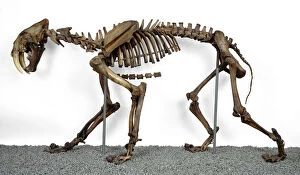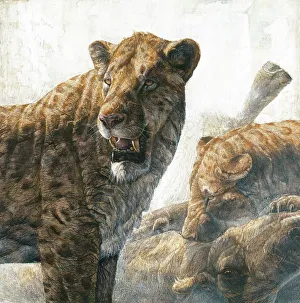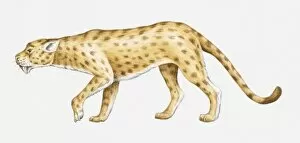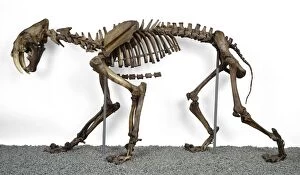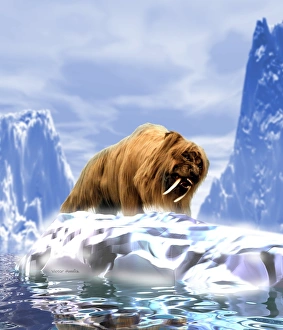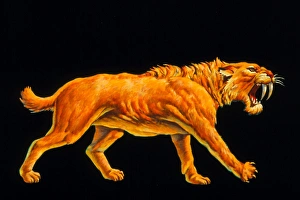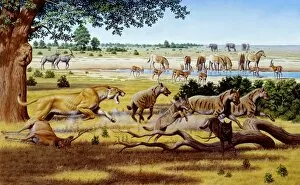Sabre Toothed Cat Collection
The sabre-toothed cat, also known as Smilodon fatalis, was a fearsome predator that roamed the Earth during the Pleistocene epoch
All Professionally Made to Order for Quick Shipping
The sabre-toothed cat, also known as Smilodon fatalis, was a fearsome predator that roamed the Earth during the Pleistocene epoch. With its long, curved canine teeth measuring up to 7 inches in length, this apex predator was well-equipped for taking down large prey. Another species of sabre-toothed cat called Homotherium scimitar cats had shorter canines but compensated with sharp and serrated incisors. These cats were highly adaptable and could be found in various habitats across different continents. An illustration of an Oligocene Sabre-toothed cat (Hoplophoneus sp. ) showcases its powerful build and muscular limbs. This ancient feline is depicted from a side view, capturing its impressive stature. In a prehistoric scene, a smilodon takes center stage while a mammoth grazes in the distance. This artwork transports us back in time when these magnificent creatures coexisted. Thylacosmilus was another type of sabre-toothed cat known for its unique dental structure. Its elongated upper canines protruded downwards like daggers as it leaped forward to catch its prey. Fossil remains provide valuable insights into the anatomy of these extinct predators. The fossil skull C016 / 5067 offers a glimpse into the intricate details of their skeletal structure, while the fossil skeleton C016 / 5066 reveals their overall size and shape. The sabre-toothed cat's reign lasted for millions of years before eventually going extinct. Smilodon fatalis is one such example that captivates our imagination with its awe-inspiring presence on Earth. Artwork depicting a smilodon captures the essence of this majestic creature - sleek fur, piercing eyes, and those iconic saber-like teeth that struck fear into any potential threat or prey animal they encountered. Hunting scenes featuring sabre-toothed cats showcase their stealthy and strategic approach to capturing food.

